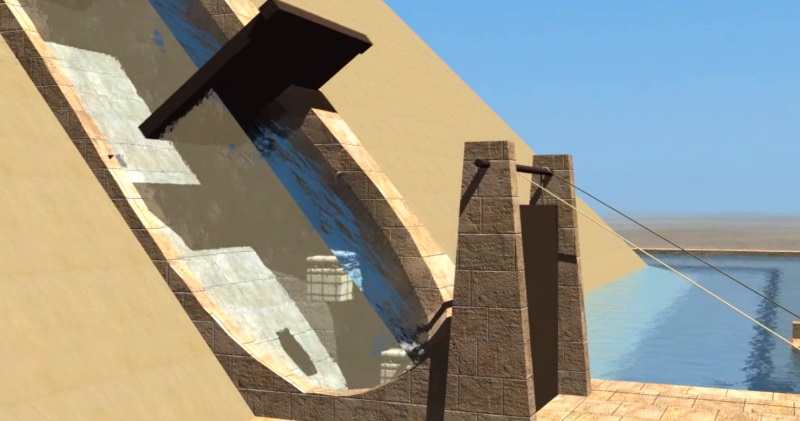The weight of water dictates that the water shaft/lift (seen in the theory video) has multiple gated locks at 50 foot intervals, which keeps the pressure to within 2 bar pressure, within each segment.When construction project manager Chris Massey set off on a surprise trip to Egypt, wherever he looked, he saw problems with the perceived wisdom on how the pyramids, temples and tombs of the pharaohs were built:
source/image: pyramidsreallybuilt
If limestone blocks were dragged up a mud brick ramp to be placed at the top of the Great Pyramid, where is the evidence of this huge ramp? How could materials such as wooden rollers and mud bricks take the strain put on them by tons of stone?
source/image: pyramidsreallybuilt
Thousands of men are supposed to have dragged the building blocks across the desert in the searing heat – how did the ancient project managers keep morale up amongst the dusty and tired workforce?
Advertisement
Surely there must have been an easier way? Massey looked around him and saw the greatest resource available to the Egyptians – the waters of the mighty Nile.
This engaging account is the result of Massey’s pool-side ponderings, in which he gives a detailed alternative theory of how the ancient Egyptians could have used water to their advantage to make pyramid building much easier.












